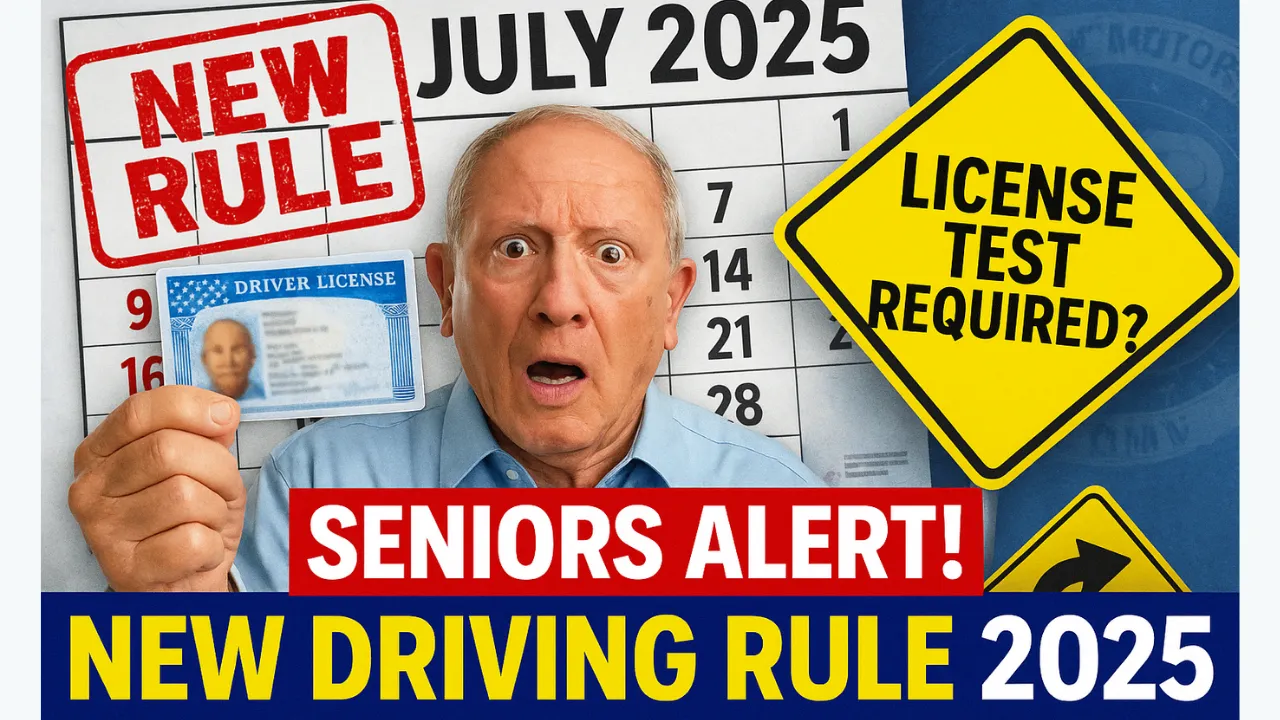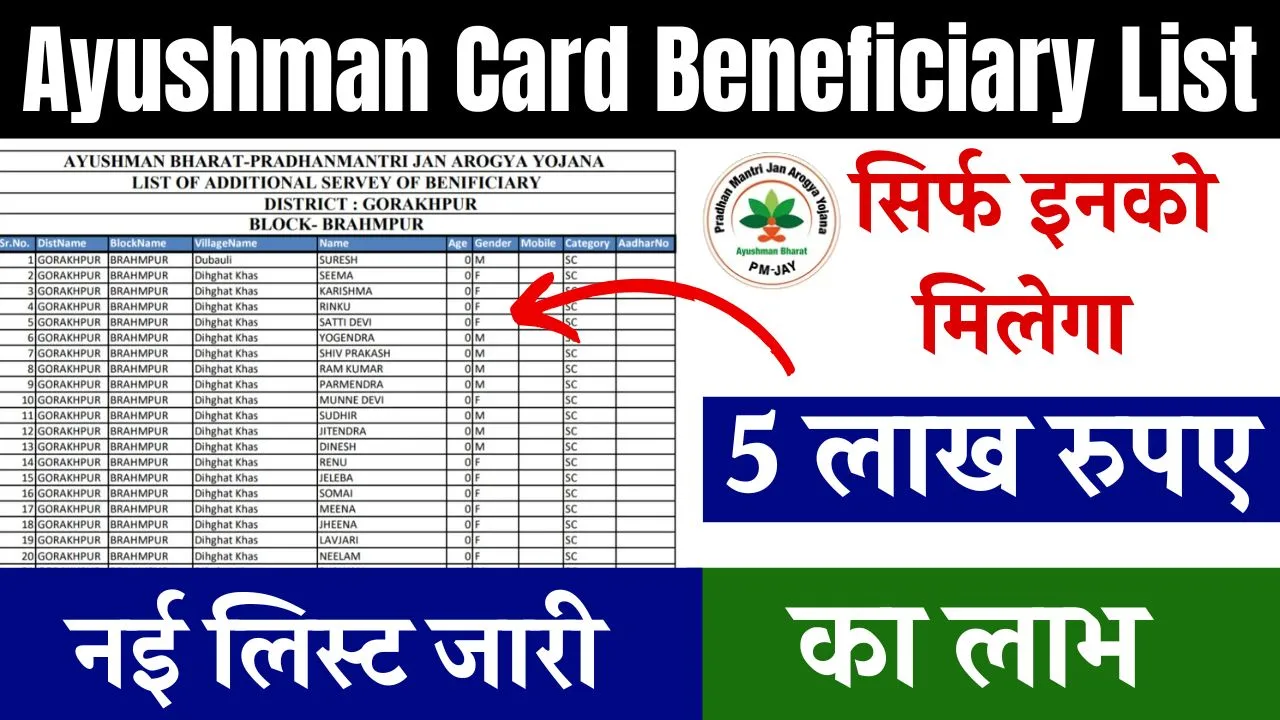New U.S. Driving License Rule: America’s roads are about to see a significant shift as a new law tailored specifically for senior drivers takes effect in July 2025. With the country’s senior population steadily growing, the demand for safer yet respectful policies has never been greater. Older adults, especially those aged 70 and above, rely heavily on their ability to drive—whether it’s for doctor visits, grocery runs, or staying socially connected. But age-related changes can subtly affect driving capabilities, creating potential safety risks for everyone on the road.
To address these concerns without compromising individual independence, the New Driving License Rule for Seniors 2025 introduces a structured, ability-focused license renewal process. The goal is to strike a balance between freedom and safety by evaluating senior drivers through tiered assessments rather than age alone. Here’s a full breakdown of what this means for senior citizens, their families, and road safety in general.
New Driving License Rule for Seniors 2025: What Seniors Must Know
The New Driving License Rule for Seniors 2025 brings forward a thoughtful approach to assessing older drivers’ abilities without assuming that age equals incapability. This rule enforces a tiered renewal framework that increases check-ups as drivers age. Unlike previous systems that focused solely on expiration dates, this rule introduces tailored testing such as vision exams, reaction assessments, and, for the oldest age group, road tests. These changes will roll out across all states starting in July 2025, although implementation specifics may vary. The rule aims to promote safer driving, reduce accident risks, and ensure that seniors can drive confidently—or safely transition to alternatives if necessary.
Overview Table: Driving License Rule Changes for Seniors (Effective July 2025)
| Age Group | Renewal Frequency | Required Tests |
| 70–79 | Every 4 years | Vision test (varies by state) |
| 80–86 | Every 2 years | Vision + reaction time test |
| 87 and older | Every year | Road test + full medical evaluation |
Why the Change Now?
The U.S. is experiencing a demographic transition. As of 2025, around 48 million Americans over the age of 65 hold a valid driver’s license. Projections indicate this number will continue to rise over the next 20 years. As a result, there’s growing concern over how age-related challenges—like slower reflexes, diminished eyesight, and cognitive decline—could affect driver safety.
However, the government recognizes that driving remains critical to senior independence. That’s why this law doesn’t push for blanket restrictions. Instead, it looks to identify drivers who may need support or alternative transportation, while still honoring the many older adults who are fully capable of safe driving.
How the New Law Works
The New Driving License Rule for Seniors 2025 replaces generalized renewal cycles with an age-specific structure. It introduces progressive license requirements for older drivers to reflect their evolving health conditions. Here’s how it’s structured:
- Ages 70–79: Must renew their license every 4 years. Most states will require a vision test, but other assessments may be optional.
- Ages 80–86: Renewal occurs every 2 years. These drivers must pass both vision and reaction time assessments.
- Ages 87 and above: Annual renewal is mandatory. Seniors must undergo a road test and full medical evaluation to confirm driving capability.
These evaluations are not intended to punish. Instead, they offer a chance to check in and ensure seniors are still road-ready.
Can Someone Report a Senior Driver?
Yes, concerned individuals—such as family members, doctors, or even neighbors—can report a senior they believe may no longer be fit to drive. Once a report is filed with the local Department of Motor Vehicles (DMV), the agency may require the driver to complete additional testing or undergo a medical evaluation.
This reporting mechanism serves as a preventative measure. It allows families and communities to intervene before an accident occurs, potentially saving lives while preserving the dignity of senior drivers.
State-by-State Variation
Although the policy comes from a federal directive, it offers flexibility to individual states. Each state has the authority to implement the rule according to its own regulations, which means requirements may differ from place to place.
Examples include:
- California may prioritize in-person renewals and on-site testing.
- Florida might adopt telehealth screenings for vision and cognitive assessments.
- Texas could require medical professionals to provide certified reports as part of the renewal process.
Therefore, it’s important for seniors and their families to regularly check their state DMV website or contact their local office to stay informed on updates.
Preparing for the July 2025 Rollout
The new rule goes live in July 2025, so seniors and caregivers should take time now to prepare. A proactive approach ensures that renewal appointments go smoothly and reduces the likelihood of being caught off guard.
Here’s how to prepare:
- Schedule vision and hearing checkups
- Review medications that may impair focus or reaction time
- Talk to a doctor about mobility and cognitive health
- Refresh driving skills, especially defensive techniques and urban navigation
- Stay updated with state-specific DMV requirements
Being ahead of the curve helps seniors maintain independence without unnecessary stress or complications.
Restricted License Options
In cases where full driving privileges may pose risks, seniors might be offered restricted licenses. These licenses maintain a level of independence while minimizing dangers associated with complex driving situations.
Types of restrictions could include:
- Driving only during daylight hours
- Limiting travel to a specific geographic radius
- Prohibiting freeway driving
- Avoiding driving during bad weather
These adjustments allow seniors to keep their mobility while reducing the risk of accidents under challenging conditions.
Alternatives to Driving
For seniors who are no longer able—or choose not—to drive, there are a growing number of transportation alternatives that can meet their needs without sacrificing independence.
Consider these options:
- Rideshare services (Uber, Lyft) with senior assistance features
- Community transportation services provided by local governments
- Public transit systems with accessibility accommodations
- Volunteer driver programs organized by churches or nonprofits
- Senior ride programs that offer scheduled transportation to appointments and stores
These alternatives can ease the transition away from driving while still supporting a full, active lifestyle.
FAQs
Q1. Does this new driving rule apply to all states?
Yes, the federal framework applies nationwide, but each state has flexibility in how they implement the changes. Some may have additional requirements or different renewal processes.
Q2. Will my license automatically be revoked at a certain age?
No, the rule does not revoke licenses based on age. It introduces scheduled evaluations to ensure that seniors remain safe behind the wheel.
Q3. What happens if I fail a required test?
Failing a test may lead to a restricted license or a temporary suspension. Drivers may be given the opportunity to retake the test or address specific health issues first.
Q4. Can I appeal a DMV decision if I lose my license?
Yes, most states offer an appeal process if you believe a decision was made in error. You can request a reevaluation or submit medical documentation.
Q5. How can I help a family member prepare for their renewal?
Support them by scheduling doctor visits, helping them practice driving, and reviewing local DMV guidelines. Honest conversations and preparation make the process smoother.














